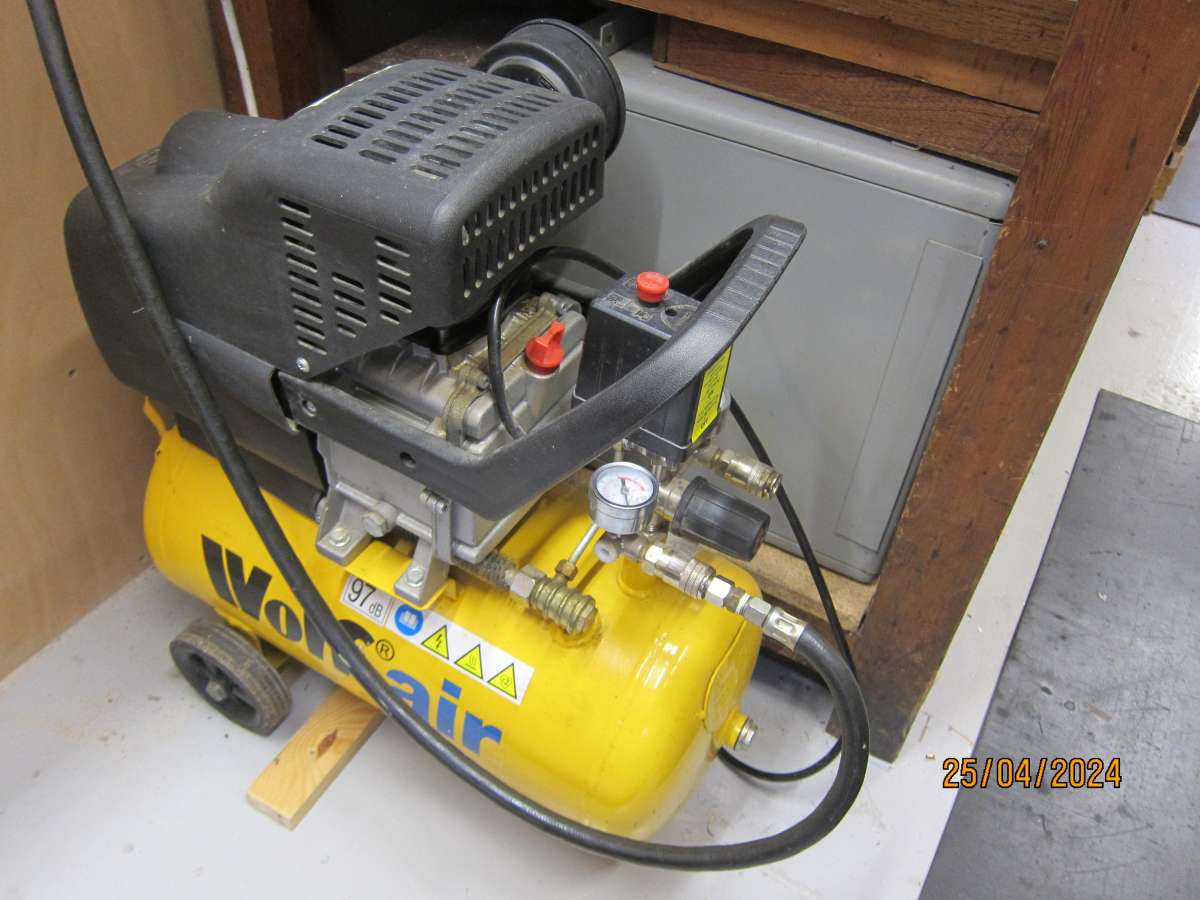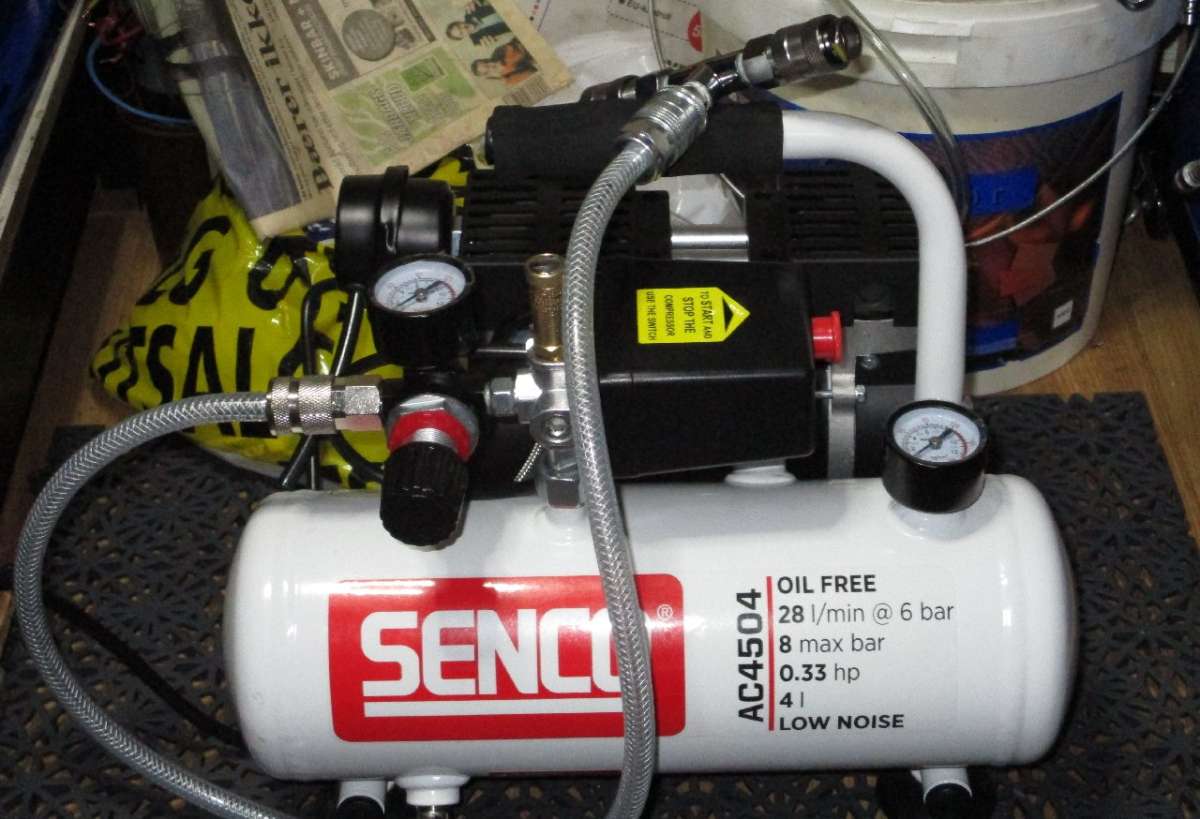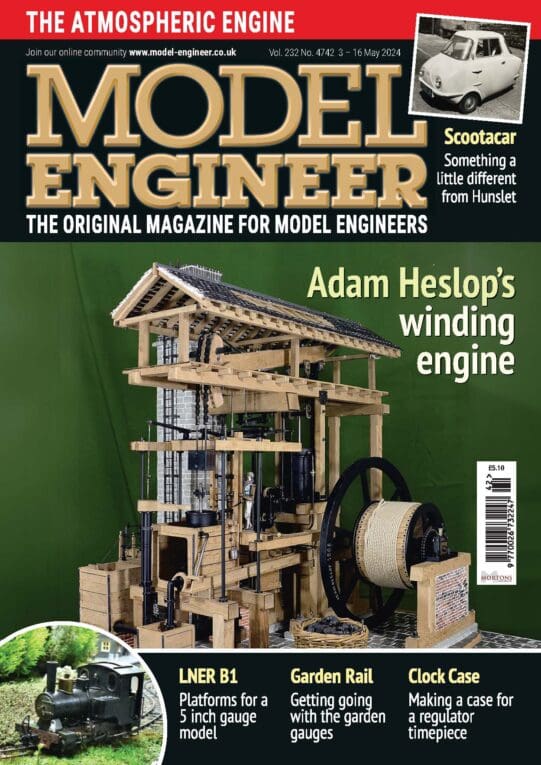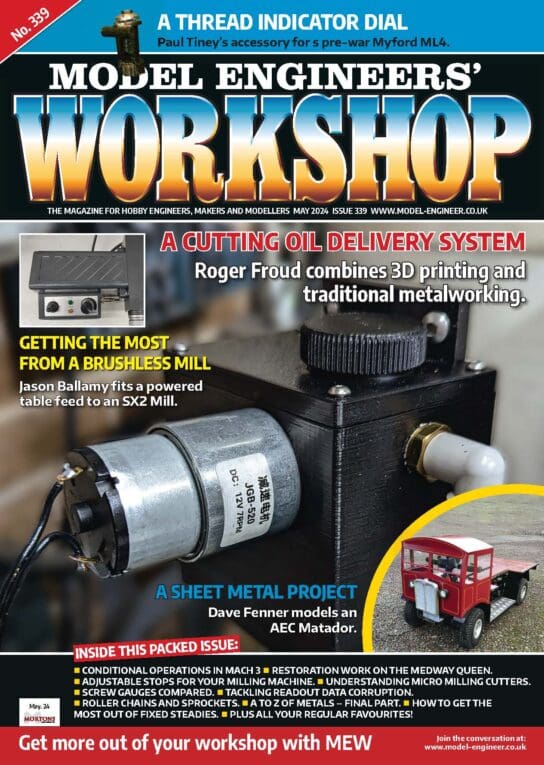Strikes me an air pump to drive small engines would make a good project, though it might be difficult.
The ideal pump would be small, quiet, and electrically driven, with a minimum of adjustments. It should be able to maintain an output pressure of up to 10psi. (I guess most model engines need less than 10psi.)
So far, so good, but a vital parameter is missing: it is the required air-flow, that is the volume of air needed to turn the engine within a given time. It is measured in litres per second, or cubic feet per minute. Although the engine requires a certain pressure to start, a certain steady volume of air is needed to keep it running. The volume of air needed depends on the swept size of the cylinder and how many piston strokes per second, plus a hefty allowance for leaks. At the same pressure, a big multi-cylinder engine will need a much higher airflow (litres per second), than my little Pottymill!
Calculating the air requirement is similar to sizing an electric motor, where air pressure is equivalent to Volts, air volume is equivalent to Amps, and pressure * volume / time is equivalent to watts. The relationship is closer than might be imagined, for example if it’s found that an electric motor takes ‘n’ watts to drive an unpowered steam engine in reverse, effectively measuring the engine’s mechanical efficiency/friction, then an air compressor motor to drive the engine must be significantly more powerful than that.
I’d bet money that apart perhaps from Jason, no-one on the forum has calculated how much air an engine needs to run, or – even better – measured it. Hence most advice about pumps for this purpose is guesswork, or ‘this worked for me’, rather than thought out. I’m guilty too!
Understanding that a pump for this purpose has to deliver moderate pressure at highish volume helps understand why many alternatives don’t work well:
- A car foot pump produces slow high-pressure pulses of air in low volumes.
- An electric type inflater produces fast high-pressure pulses of air in tiny volumes.
- Fans move high volumes of air at low pressure.
- Refrigerator compressors are high pressure, low volume, and expect to work into a constant load. Many of them use the refrigerant as a lubricant, and don’t last long pumping dry air.
- Aquarium pumps get fairly close to the required pressure * volume relationship, but they’re generally too small to run model engines.
The ideal pump doesn’t seem to be available off the shelf, the closest I’m aware of being the larger diaphragm pumps used to power artists air-brushes and paint sprays. Maybe a rubber boat inflater. Not cheap.
What does work is a bog-standard workshop air-compressor, also useful for other things. An unsuitable high-pressure low volume per stroke pump runs automatically to keep a reservoir at up to about 20bar and some compressors just deliver that; the volume released is only constrained by the pipework, so whoosh! Domestic compressors are more likely to feed the air out through a pressure regulator, which can be preset to ensure the hose pressure doesn’t exceed, say 0.5Bar. Like a gearbox, the reservoir and regulator transform the mismatch between the pulsed high-pressure air input and the what’s needed at the output. There is a potential problem! Regulators reduce airflow as well as pressure, so depending on their design it may not produce an exact match to the engine. In practice, they seem to work well enough. The problem is size and noise. Even ‘quiet’ workshop compressors are too loud in my house.
I feel an experiment coming on. What’s the easiest way of finding how much air (volume) is consumed by a real model engine? If I can find the time, I’ll run my PottyMill inside a sealed deflated plastic bag, and see how long it takes for the exhaust and leaks to fill a bag of known size. Not difficult to measure the rpm at the same time. Knowing the input pressure and RPM, and the output volume over time, would give me a strong clue as to the ideal type and power of pump needed.
Then all that’s needed is to design the pump!
Dave
duncan webster 1.






